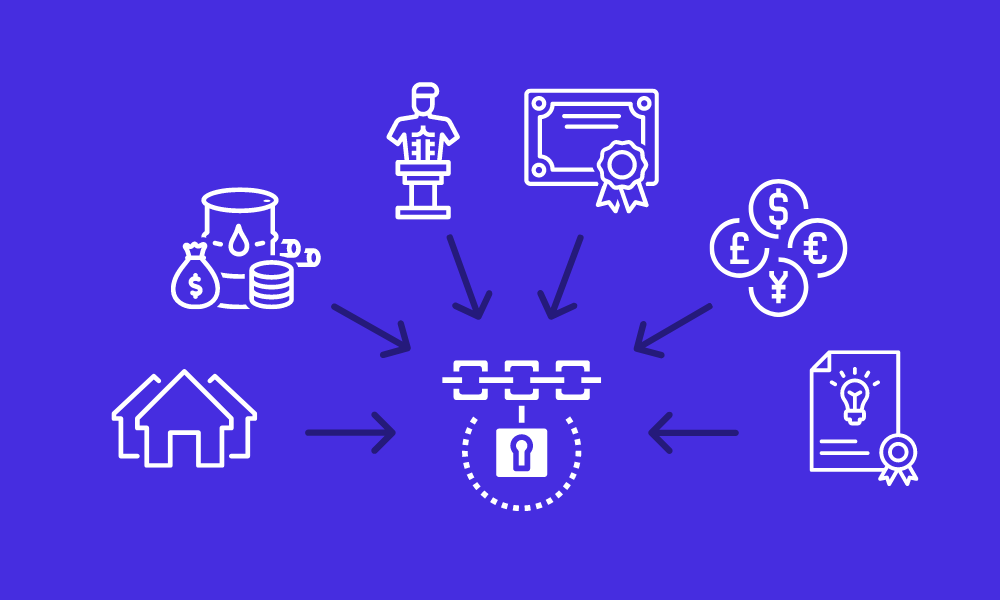Integrating blockchain with the music and art industry reshapes the creative landscape, offering musicians and artists effortless monetization, indisputable provenance, and convenient art investment.
However, amid the promise of change, significant issues persist within the music and art industries. Let’s explore these issues, shedding light on how blockchain technology can usher in a more equitable and efficient creative sector.
This article delves into blockchain basics, its transformative potential, and challenges within these domains.
Contents
How Blockchain Helps the Art and Music Sector
Blockchain technology, especially when applied to music and art, has the potential to address several longstanding issues in these creative industries.

Source: dacast.com
-
Copyright and intellectual property protection
Achieving an immutable record of ownership and provenance, musicians and artists can leverage blockchain to timestamp their works, providing irrefutable proof of their creation dates. Such applications prove especially valuable in addressing plagiarism and copyright dispute concerns.
-
Royalty payments
By facilitating automated royalty payments through smart contracts, musicians can receive prompt and transparent royalties in the music industry whenever their music is streamed or purchased. This eliminates the need for intermediaries and ensures artists receive their rightful earnings.
-
Tokenization
It introduces fractional ownership to creative works, such as music and art, expanding investment opportunities for a broader range of enthusiasts. This allows investors and art lovers to acquire tokenized shares of valuable artistic creations, making ownership more accessible and inclusive.
-
Artificial scarcity for digital art
Blockchain’s non-fungible tokens (NFTs) have revolutionized digital art by creating artificial scarcity. Unlike easily copied traditional digital files, NFTs certify uniqueness as one-of-a-kind digital assets on the blockchain, akin to limited edition physical art.
This transformation has boosted the digital art market, elevating demand and prices and making NFT ownership prestigious in the digital art world.

Source: kaleido.io
-
Decentralized marketplaces
Blockchain reduces reliance on mediators like labels, galleries, and auction houses, empowering musicians and artists. It allows creators to interact directly with fans and collectors, giving them control over pricing and distribution.
Musicians release music directly to listeners, bypassing labels. Visual artists digitize and tokenize their work, selling it straight to buyers on blockchain platforms, reducing reliance on galleries, and motivating artists globally.
-
Provenance for collectibles
Blockchain technology is increasingly becoming a vital tool in authenticating and verifying unique collectibles in both the art and music industries. This includes rare items like vinyl records, vintage musical instruments, and exclusive art pieces. Blockchain’s ability to provide a secure and transparent history of these items revolutionizes how collectors and enthusiasts verify authenticity and provenance.
The primary benefit of using blockchain for collectibles is the assurance of authenticity. For rare vinyl records, for instance, blockchain can store detailed information about the record’s origin, previous owners, and any restoration work it has undergone. This level of detail is crucial for collectors who often rely on the rarity and condition of the piece for its value.
-
Data security
Storing creative works on the safeguards musicians and artists against piracy and unauthorized distribution. Blockchain’s secure, immutable ledger prevents tampering, copying, or unauthorized distribution of music and art, offering enhanced protection compared to traditional digital methods susceptible to piracy.
Artists can trust that their creations are more secure from intellectual property theft, ensuring greater control over their work and revenue streams.

Source: techslang.com
How Does it Impact the Music Industry?
The music industry, often criticized for its complex royalty systems and opaque distribution networks, is on the brink of a transformation thanks to technology. This section delves into how blockchain is reshaping music distribution, empowering musicians, and what the future holds for this synergy.
Transforming Music Distribution and Rights Management
Blockchain’s most notable impact in music is its potential to revolutionize distribution and rights management. Traditionally, tracking music royalties has been a convoluted process, often leading to delayed and inaccurate payments to artists. Blockchain introduces a level of transparency and efficiency previously unseen in this sector.
Firstly, blockchain enables decentralized and transparent tracking of music rights. Each transaction or usage of a song can be recorded on a blockchain, ensuring accurate royalty distribution. For instance, platforms like Ujo Music and Audius leverage blockchain to streamline royalty payments, ensuring artists receive their due compensation promptly and transparently.
Moreover, blockchain’s immutability helps in combating piracy, a long-standing issue in the music industry. By establishing a secure and unalterable record of ownership, it makes it easier to verify authentic content, thus protecting artists’ intellectual property.

Source: linkedin.com
Empowering Musicians and Fans
Blockchain is not just revolutionizing the business side of music; it’s also enhancing the artist-fan relationship. In the traditional music industry model, intermediaries like record labels and streaming platforms often dominate the relationship between artists and their audience. Blockchain technology, however, is shifting this power dynamic, allowing artists to connect directly with their fans.
This direct-to-fan approach, facilitated by blockchain, enables artists to sell their music directly to listeners, bypassing traditional distribution channels. This not only increases the revenue artists receive but also strengthens the bond between artists and their fans. Platforms like Mycelia, founded by artist Imogen Heap, offer a glimpse into how blockchain can create a more artist-centric music industry.
In addition to financial benefits, blockchain also enables new forms of fan engagement. For example, artists can issue blockchain-based tokens or NFTs (Non-Fungible Tokens) that offer fans exclusive access to content, early ticket sales, or unique experiences. This tokenization of music assets creates a new ecosystem where fans are not just passive listeners but active participants in the artists’ creative journey.
Predictions
Looking ahead, blockchain’s role in the music industry is poised to expand further. One promising area is the integration with other emerging technologies like virtual reality (VR) and augmented reality (AR). This combination could lead to immersive musical experiences that are uniquely owned and distributed via blockchain.
Moreover, as blockchain technology matures, we can expect more mainstream adoption. Major music labels and streaming platforms may begin to incorporate blockchain to streamline their operations and provide better services to both artists and listeners.
Make Blockchain Work for the Arts
Blockchain technology holds immense promise in addressing challenges within the creative sector, particularly in blockchain in music and art. However, it’s essential to recognize that this technology is still in its nascent stages of adoption within these creative fields.
To fully realize the potential of blockchain in these sectors, there are significant hurdles to overcome, including scalability, environmental concerns related to energy consumption in blockchain networks, and the need for wider user adoption.
Nonetheless, these efforts represent a significant stride toward creating a more equitable and accessible ecosystem for producers and artists alike.
